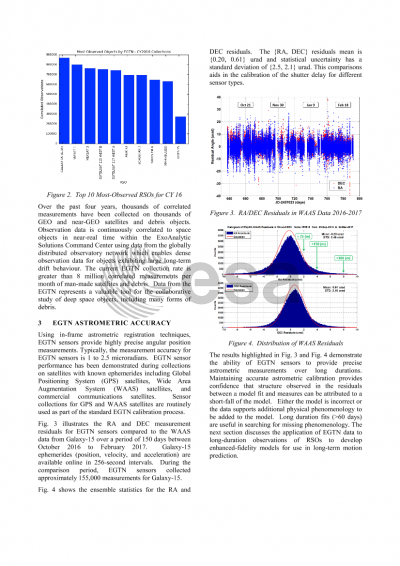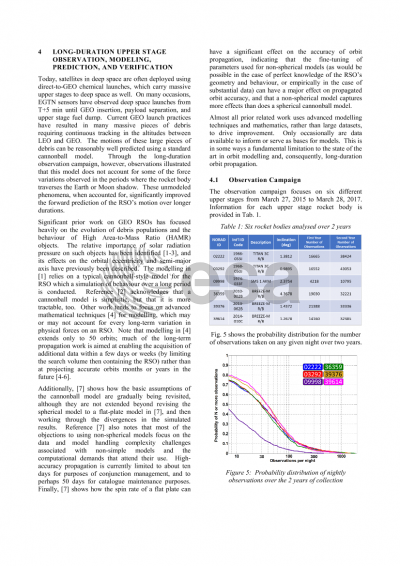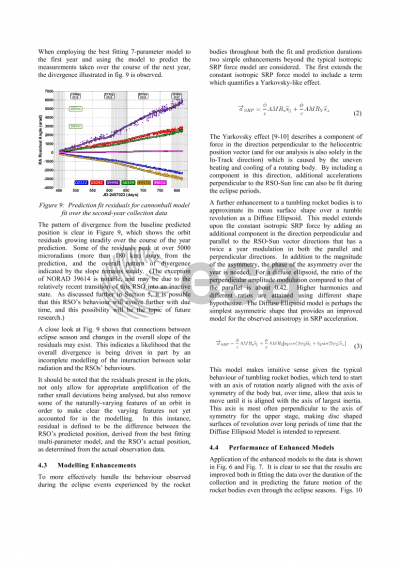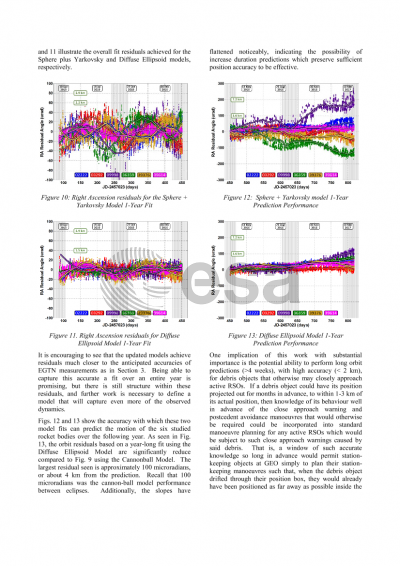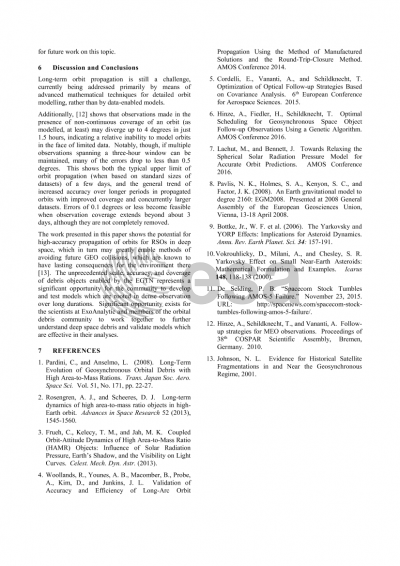Document details

Abstract
Precision orbit determination (OD) and characterization of resident space objects (RSOs) are fundamental components of Space Situational Awareness (SSA). Over 600 days beginning January 1, 2015, ExoAnalytic Solutions collected more than 60 million correlated astrometric measurements of active and inactive resident RSOs in geosynchronous Earth orbit (GEO) and in the near-GEO region using a global network of ground-based telescopes. Orbit Determination (OD) on several inactive RSOs in sub-synchronous (e.g., spent upper stages) and super-synchronous (e.g., retired satellites) orbits revealed occasional momentum impulse transfer events (MITEs) with detectable In-track velocity changes of 0.2 to 10 mm/s. These MITEs could not be explained using the accepted gravitational model and an isotropic spherical solar radiation acceleration. Two additional radiation pressure models were considered: a Yarkovsky effect and an asymmetric radiation pressure (diffuse ellipsoid), adding one and two additional free parameters to the model, respectively. Both models include a radiation pressure component perpendicular to the solar direction and in the RSO's orbital plane. The Yarkovsky and Ellipsoid radiation pressure, in combination with the RSO traversing the Earth's Umbra, can produce a measureable change in the RSO's mean motion; a delta-v of 0.5 mm/s per season is not uncommon. OD was performed using the three radiation pressure models (Sphere, Yarkovsky, and Ellipsoid) on six inactive RSOs having 9,000 to 35,000 observations over 600 days. The Ellipsoid model was in good agreement with 95% of the observations falling within a window of ± 20 microradians, or approximately ±0.8 km, over the entire 600 day duration, which included three equinox seasons. Data collection and analysis of inactive RSOs aids the SSA mission of precision tracking and characterization of debris in the space environment. In this paper, we extend our research to consider longer observation periods (greater than 600 days) and apply results to recently inactive objects to estimate their positions as they transition from active to inactive status.
Preview

